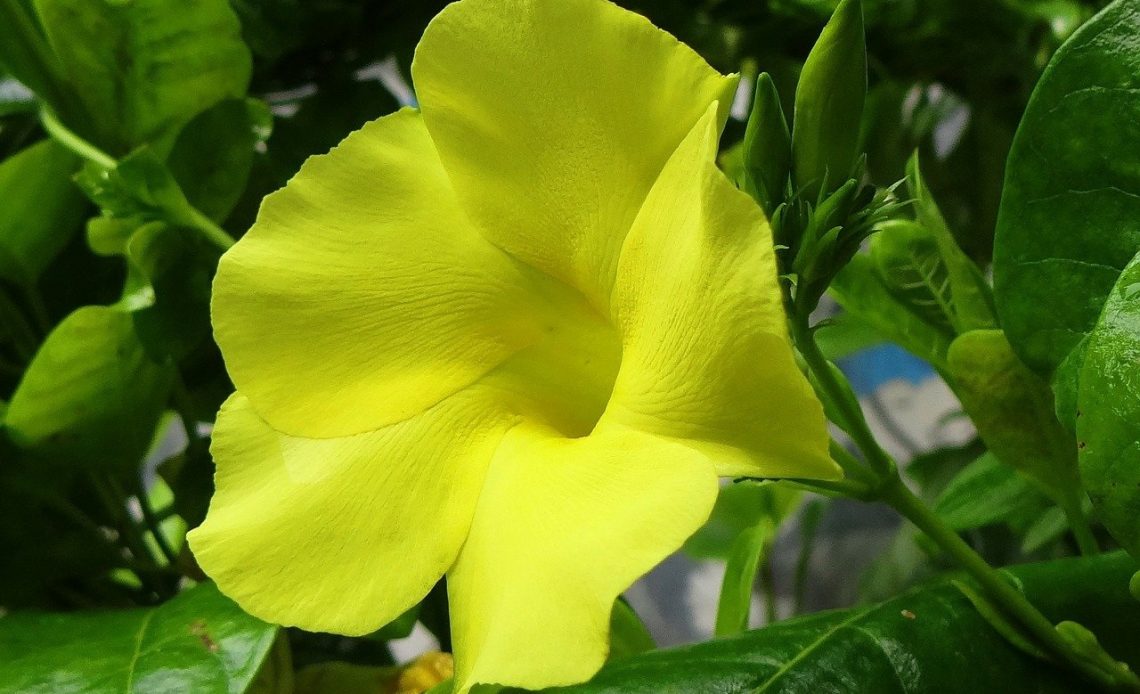

We’re here to help! Wild Yards is a completely free website that is 100% dedicated to helping you create a wildlife-friendly, sustainable yard. Read more
WildYards is reader-supported. When you buy a product through a link on our site, we may earn a comission. Every product is independently selected by our (obsessive) editors and our reviews are unbiased and objective. Read more about our mission or our privacy policy.
If you’re in the process of attracting wild birds into your backyard or garden, you might be excited to know that hummingbirds love a huge variety of different flowers, plants and shrubs. Any promise of lots of bright colors and plenty of nectar will normally entice them! But – do mandevilla attract hummingbirds?
Yes – mandevilla do attract hummingbirds, and it’s not just thanks to their tropical colors and enticing smells. These flared, tube-shaped flowers are the perfect shape for hummingbirds’ long beaks and tongues!
If you already have mandevilla vines in your backyard, or you’d like to start attracting hummingbirds with vines for the first time, keep reading for the complete lowdown.
Why do hummingbirds like mandevilla?
The mandevilla is a classic vine-style plant that’s bursting with color, and is a genuine staple of any tropical garden. It’s often very quick to start growing and giving off lovely smells, which is all the more reason why the hummingbird is likely to come fluttering along. You may know the planet by a different name – it’s commonly known as the monkey puzzle tree and the lady of the night, too.
Hummingbirds love mandevilla mainly thanks to the shape of their flowers. They tube up and flare out, rather like trumpets, therefore making it easy for hummingbirds to probe deeply into the flowers and seek out nectar. If you already know a thing or two about hummingbirds and their diets, it’s that they seek out lots of nectar and they burn up a fantastic amount of energy.
The mandevilla and the hummingbird have a mutually beneficial relationship, allowing the bird to find a near-exclusive source of nectar (not all birds can get that deeply into flowers!). The plant and flower, meanwhile, benefits from the hummingbird’s pollination.
You’ll also find that butterflies enjoy fluttering around mandevilla purely for the colors – and can you blame them? If you are already interested in adding extra color and vibrance to your backyard, then perhaps the increased wildlife visitation is an added bonus!
Are mandevilla hard to grow?
No – the great news is, once you have mandevilla growing in the best possible spot, you won’t need to give it much attention, at least compared to many other tropical plants.
What’s important to remember is that mandevilla will only grow so well in warm to hot environments. It’s to be expected from a tropical plant, of course – but anything colder than 45F is likely to kill the mandevilla outright. Hot and humid is the ideal if you’d really like your mandevilla to propagate.
How can I grow mandevilla?
Many experts advise it’s best to grow mandevilla and its flowers in the higher hardiness zones. Zones 10 and 11 will normally be ideal, though there have been cases where gardeners have been able to grow mandevilla in zones 5 and 6. Ultimately, you are going to need to keep them protected from the cold.
Otherwise, you can grow mandevilla all over the garden, and you can even take a pot into the home with you. For the best hummingbird attraction strategy, of course, it’s best to try and let mandevilla grow through hedges or in a large container.
It’s worth remembering, too, that mandevilla will need a little shade, as they can burn if the light or heat gets too intense.
A word to the wise – mandevilla can grow to be very tall indeed – around 20 feet or 6m! Therefore, you may start attracting hummingbirds both high and low across your backyard.
Mandevilla generally won’t need much water to grow healthily, so be conservative when it comes to watering these plants. If you are going to keep your mandevilla in pots or containers, be sure to carefully cut or prune occasionally.
While mandevilla is easy enough to grow, it remains very popular with seasoned tropical gardeners. That’s because it can add a huge variety of palette tones and hues to a backyard. In reds, creams, yellows, whites, pinks and more, both the flower – and the vine – are treats for the eyes. Hummingbirds know this only too well!
Is it worth growing mandevilla in my backyard?
It is certainly worth growing mandevilla in your own yard or garden, mainly thanks to their reputation for attracting hummingbirds and butterflies with very little effort from you!
Of course, it is still worth remembering to be careful with your zone planting, as mandevilla are cold-sensitive – but during the warmer, sunnier months, hummingbirds and mandevilla are always likely to go hand-in-hand.
Mandevilla are just some of the potted flowers that attract hummingbirds – if you’re keen to introduce a host of tropical creatures to your garden this year, it’s a great idea to plant an array of blooms ahead of the good weather. Why not take a look at further guides to attracting hummingbirds across our site?

Hey, thank you so much for the all the information. I’m so looking forward to grow my mandevills and reading more on how I can attract birds and butterflies to my new backyard.